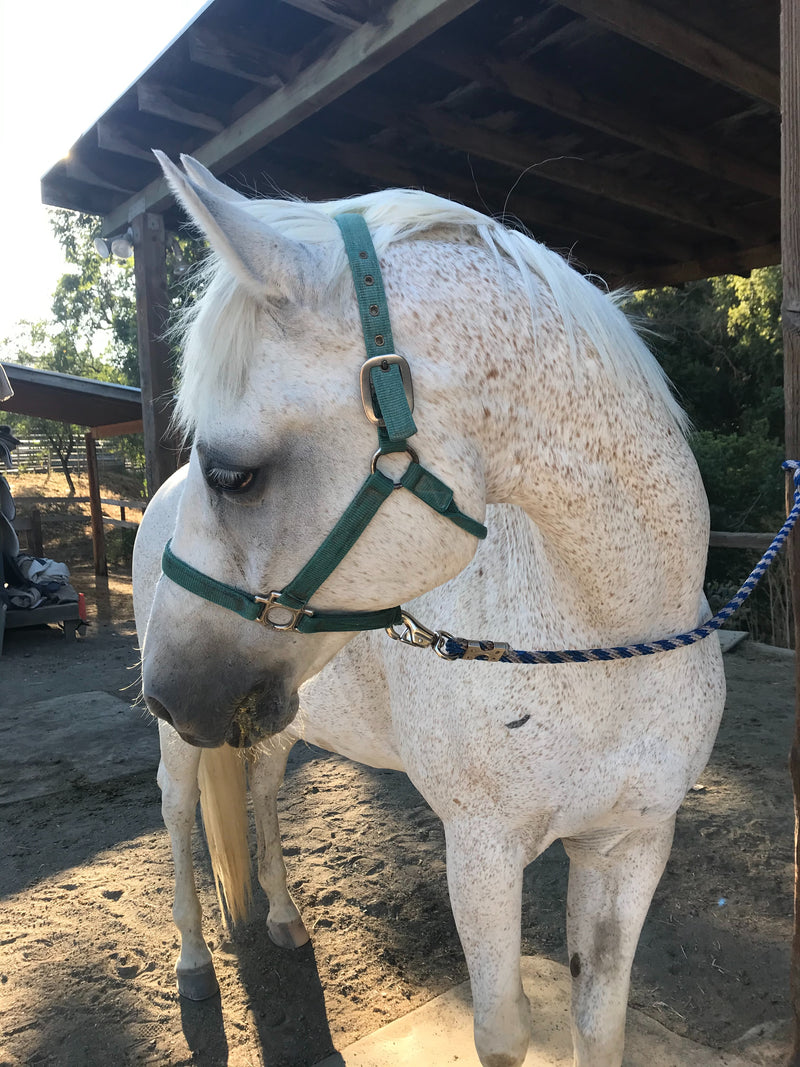Published: September 2020 | Updated: November 2022
For as strong and stoic as horses are, their GI systems are somewhat delicate. After all, it doesn’t take much to cause a problem in that department. Colic, diarrhea, hindgut ulcers--all can occur for a myriad of reasons including sudden diet changes, stress, heavy exercise, improper dietary management, or even dehydration.
If you’ve ever had a routine exam performed or if your horse has previously experienced digestive upset, your veterinarian likely used a stethoscope to listen to gut sounds, also known as borborygmi.
Borborygmi is the rumbling, gurgling and growling noises made by the gut due to movement of fluid or gas through the gastrointestinal tract.
This is measured to assess GI motility--how food is moving through the horse’s digestive tract.
Healthy horses will have consistent gut sounds, but limited or absent gut sounds can signify a problem. Horse owners can learn to listen to borborygmi sounds as well, which can help to alert them to a problem which may need veterinary intervention.
→Highly Recommended: The veterinary-recommended supplement proven to help protect your horse’s digestive system on a daily basis←
The Four Quadrants of the Horse’s Digestive Tract
There are four main locations, or quadrants, to listen to borborygmi and they are located in the upper and lower flank area on each side of the horse. Each quadrant correlates to an internal organ in the equine digestive system:
- Upper left quadrant: small intestine;
- Lower left quadrant: large intestine;
- Upper right quadrant: large intestine and cecum (the cecum is a common site for impaction colic); and
- Lower right quadrant: large intestine.
It should be noted that the horse’s small intestine tends to be fairly quiet while the large intestine and cecum tend to be a source of more borborygmi.
What Should a Horse’s Gut Sound Like?
When listening to borborygmi, you will likely hear a variety of noises. Normal gut sounds will likely sound like a mixture of grumbles, roars, and even tinkling noises. There is no specific rhythm necessarily, but you should hear something every few seconds or so.
When dehydration occurs, there will be a decrease in the frequency and intensity of gut sounds. Not hearing borborygmi at all could indicate several things–gas, impending diarrhea, or impaction.
Again, if you listen to all four quadrants and don’t hear anything, a call to your vet is advised.
Faint tinkling noises could indicate ulcers or possibly an infection, but this is something that a vet would need to diagnose. A constant rumbling likely indicates diarrhea.
→Highly Recommended: The veterinary-recommended supplement proven to help protect the equine GI tract from daily stressors and threats←
How to Listen for Gut Sounds
When listening for borborygmi, evaluate each quadrant of the horse for at least one minute.
- One to three borborygmi in a 60-second period is normal.
- If less than one borborygmus is heard per minute, then that portion of the gut is likely hypomotile (not enough movement).
- If more than three borborygmi are heard per minute, the area is likely hypermotile (too much movement).
- If there is constant borborygmi, which sounds like water running from a faucet or a rushing stream (extreme hypermotility), call your vet. This can be indicative of colitis or severe diarrhea.

Keep in mind that depending on when the horse’s last meal was, there could be variations in the frequency of borborygmi.
To keep your horse’s digestive tract functioning smoothly, feeding a forage-based diet is recommended, and always ensure your horse doesn’t have to go long periods of time with nothing to eat.
Additionally, feeding a probiotic supplement can help promote gut health for horses and reduce the chance of your horse developing GI problems now or in the future.

